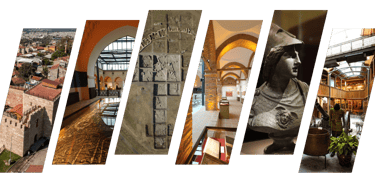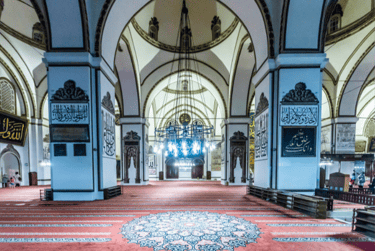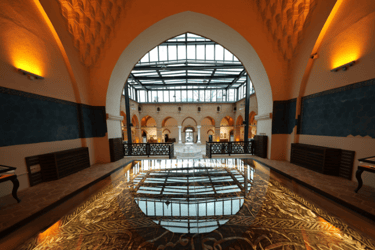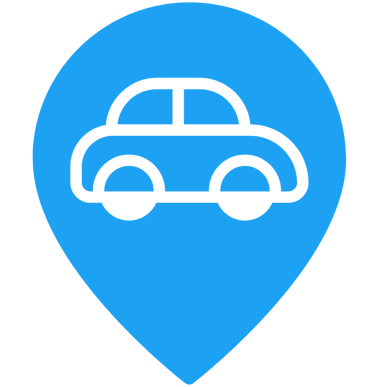Step into our Bursa travel guide, where we delve into this enchanting city, uncovering its fascinating history, lively culture, and natural wonders. Join us as we wander through Bursa's charming old streets, explore its ancient sites, and savor its delicious cuisine. Brace yourself for a journey through Bursa's captivating past and vibrant present, where every step unveils a story waiting to be discovered.
Bursa Travel Guide
Bursa, The 1st Ottoman Empire Capital, Where History and Timeless Beauty Unite

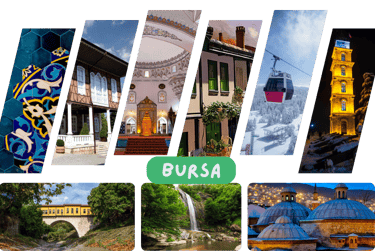
Bursa, a UNESCO World Heritage listed city, holds the distinction of being the first capital of the Ottoman Empire and remains a captivating destination that defies the passage of time. Its grandeur is evident through its majestic mosques, historic inns, soothing baths, sacred tombs, bustling bazaars, and a remarkable history spanning seven millennia.
A renowned Turkish poet once lauded this ancient city, describing it as possessing 'another time.' He elaborated, 'It's a timeless essence beyond the confines of calendars and clocks, transcending our daily lives filled with laughter and enjoyment.' As you explore Bursa, you'll come to appreciate the profound truth in the poet's words.
Venturing into the heart of the city, you'll find yourself enveloped by historical mosques and charming inns, as if your connection to the present has been momentarily suspended, and you've journeyed back through the centuries.
Bursa has 3 remarkable UNESCO World Heritage sites – İznik (formerly Nicea), a location featured in Dan Brown's 'The Da Vinci Code' where the historic Council of Nicaea convened under the decree of the Roman Emperor Constantine, and the picturesque Ottoman village of Cumalıkızık, which boasts a history of over 700 years. These alone make a compelling case for your visit to Bursa.
But Bursa's UNESCO treasures don't end there. The city center itself is a living testament to a glorious past, adorned with districts of khans(caravanserais), kulliyes (religious institutions) that seamlessly integrate mosques, religious schools, public baths, and even a kitchen for the less fortunate. This dynamic ensemble mirrors the multifaceted societal fabric of the Ottoman era, where architecture was not just about aesthetics but a reflection of community welfare.
Amidst this historical mosaic, the tomb of Osman Ghazi, founder of the Ottoman dynasty, stands tall, a symbol of the city's foundational roots. Joining him in eternal rest is his son, Orhan Ghazi, the second sultan of the Ottoman Empire, their tombs encapsulating the legacy of a dynasty that shaped the course of history.
Bursa guarantees a satisfying blend of history, nature, sea breezes, and opportunities for winter sports. But let's not forget the city's culinary delights. Bursa is a place that not only pleases the eye but also tantalizes the taste buds.

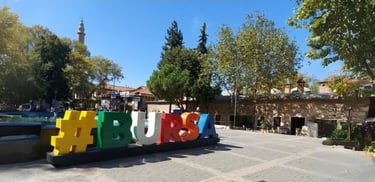
Bursa was meticulously designed and governed through an innovative and ingenious system, a testament to the visionary city planning initiated by the first Ottoman Sultans.
During the foundation of Ottoman Bursa, strategic locations on hills overlooking the plains were identified. In these key areas, complexes featuring mosques, madrasahs, baths, imarets, tombs, and public buildings were meticulously constructed under the reigns of five significant sultans: Orhan Gazi, Murad I, Yıldırım Bayezid, Çelebi Mehmed, and Murad II. These complexes, serving as social, cultural, religious, and educational hubs, played a pivotal role in shaping the city's boundaries.
The majority of Bursa's historical landmarks, integral to a complete experience of the city, are situated near the city center at Heykel. Easily accessible by public transport or car, these significant sites are within walking distance or a short journey, allowing visitors to explore the rich history and culture that Bursa has to offer.
Bursa to do & seeBursa Things to do
Step into the heart of Bursa's rich history and architectural splendor with the iconic Bursa Ulu Cami, also known as the Grand Mosque. Dating back to the 14th century, this masterpiece commissioned by Sultan Bayezid I stands as a testament to the city's cultural heritage.
Admire the distinctive blend of Seljuk and Ottoman styles, the mesmerizing calligraphy by renowned artists, and the symbolic pillars that echo with centuries of spiritual significance. Join me on a journey through time and discover the profound beauty and historical resonance of this revered landmark in the heart of Bursa.
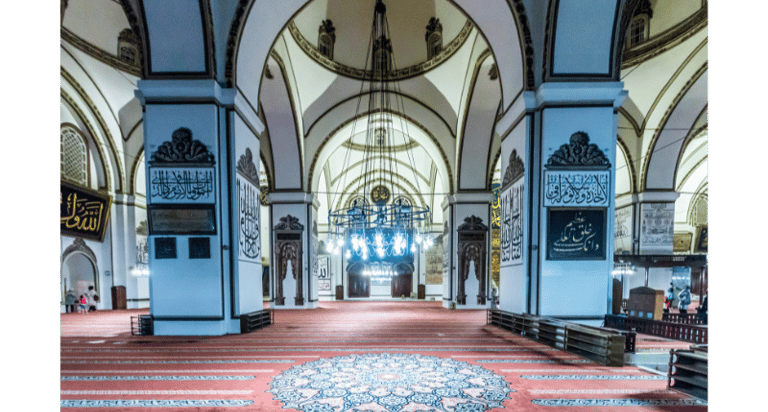

Bursa Ulu Cami / Bursa Grand Mosque
Bursa Sultan Kulliye Complexes
Embark on a captivating journey through the centuries with the enchanting Sultan Kulliye Complexes of Bursa. These architectural marvels, commissioned by the early Ottoman Sultans, stand as timeless symbols of the empire's grandeur and cultural richness. Immerse yourself in the intricate designs, serene courtyards, and magnificent mosques that make up these complexes, including the iconic Green Mosque&Tomb, Orhan Gazi, Yıldırım Bayezid, Muradiye, Emir Sultan and 1. Murat Hudavendigar Kulliye Complexes. Each element tells a story of Bursa's pivotal role in shaping Ottoman history. Join me in exploring the spiritual and architectural legacy of the Sultan Kulliye Complexes, where history comes to life in the heart of Turkey's cultural capital Bursa.
Covered Grand Bazaar
The Bursa Grand Bazaar, situated in the UNESCO World Heritage-listed Hanlar Region, stands as one of the Ottoman Empire's earliest marketplaces. Boasting a rich history spanning seven centuries, it remains the bustling commercial heart of the city.
During the reign of Orhangazi, the second Sultan of the Ottoman Empire, the areas between the inns were roofed, marking the inception of closed bazaars and the earliest form of the Grand Bazaar. Over time, additional bazaars such as jewelers, Ivaz Pasha, Gelincik, Sipahiler, quilters, chesters, and coppersmiths were integrated, forming the covered bazaar we see today. This vibrant shopping center offers a diverse array of products, from exquisite jewelry, furniture, and clothing to shoes, antiques, and bridal gowns. Accessible through various entrances, the Grand Bazaar connects you to these specialized markets.
Long Bazaar
Extending eastward from the Koza Inn, the Long Bazaar is a continuation of the Grand Bazaar. In the 17th century, the renowned Turkish traveler Evliya Çelebi reported a staggering 9,000 shops in the Long Bazaar. Initially open, the top of the bazaar is now covered. The primary trade here revolves around textiles.
Tuz pazarı (Salt Bazaar)
Tuzpazarı, one of Bursa's oldest markets, is easily accessible by strolling along the Long Bazaar. Here, you'll discover everything from nuts to cheese, spices to fresh produce, encapsulating the essence of a traditional marketplace.
Shopping
Bursa Khans Region (Caravanserais)
Many developments occurred in the region after the Ottoman conquest of Bursa, with the most significant being in the field of trade. Inns played a major role in transforming Bursa into a thriving trade center. Due to its location on the trade routes of Anatolia, especially on the Silk Road, inns became places where passers by could both stay overnight and rest.
The Hanlar(Khans) Region, included in Bursa's list of UNESCO protected historical places, is recognized as a unified whole. Today, it remains a region where Ottoman trade culture is preserved, and traditional values and rituals, such as bargaining and neighborhood culture, are still encountered.

Fidan Khan
Another historical building in Bursa's Hanlar District, Fidan Inn, was built in the 15th century by Mahmut Pasha, Grand Vizier of Fatih Sultan Mehmet. The two-story inn features a small mosque with a fountain in the middle. With 48 rooms on the ground floor and 50 on the upper floor, the ground floor houses shops, restaurants, and cafes specializing in textile work.
İpek Khan
Built in the first half of the 15th century to generate income for the Green Complex, İpek Inn was used by silk merchants during the Ottoman period. Today, with 94 rooms, it serves as a place for textile trade, housing tailor workshops and ready-to-wear shops.
Koza Khan / Silk Bazaar
Built in 1492 by Bayezıt II to generate income for the mosque and madrasah in Istanbul, Koza Inn occupies a large area between the Orhan Mosque and the Ulu Mosque. The inn, predominantly constructed with cut stones and bricks, features two floors and a total of 95 rooms 50 on the upper floor and 45 on the lower floor. The upper floor is home to shops selling various scarves, shawls, silk fabrics, colorful silk products, as well as artistic items and souvenirs.
Koza Inn, renowned for silk and silkworm cocoon trade during the Ottoman Period, remains a captivating place with a fountain and a domed mosque in the middle of the courtyard. Queen Elizabeth II visited this inn during her trip to Bursa, and today, the courtyard is arranged as a cafe and tea garden.
Pirinç Khan
Built by Beyazıt II in 1508 to support the mosque and its imaret in Istanbul, Pirinç Inn reopened in 2002 as a shopping center. The inn, with two floors, boasts 40 rooms on the upper floor and 38 on the lower floor. It was known for hosting foreign merchants before the 19th century and continues to be one of the most visited inns by foreign traders in Bursa. Today, the ground floor of the inn houses food and beverage establishments, while the top floor serves as small warehouses.
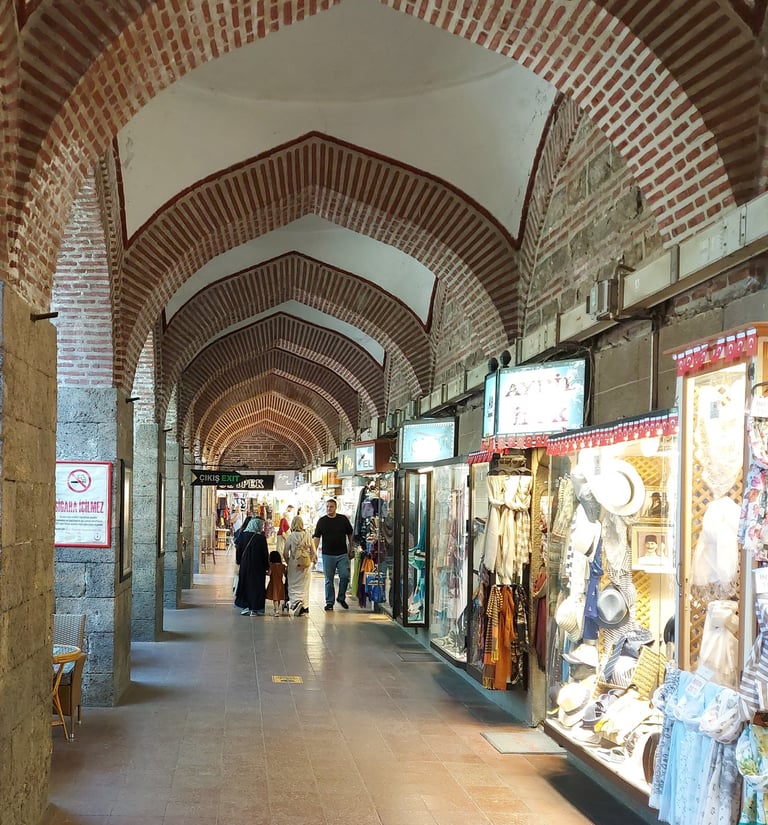

Çukur (Kütahya) Khan
Çukur Inn (Kütahya Inn) was built by Emir Sultan, one of the important Islamic scholars of the era and the son-in-law of the 4th Ottoman Sultan Yıldırım Bayezid Khan.
It has two floors, a central courtyard, two doors, and 37 rooms. During the Ottoman period, it served as a place for those who came to Bursa to stay.
Today, Çukur Inn hosts Turkish-Islamic handicraft artists and a tahini maker, along with a cafe. It is located opposite the Nalıncılar Bath on TuzPazarı Street.
Emir Khan
Built as part of the Orhan Gazi Complex after the conquest of Bursa in 1326, Emir Inn is located in the area known as Atpazarı. It is the first bedesten of the Ottomans, featuring 36 rooms on the lower floor and 73 rooms on the upper floor.
The two-story Han, constructed with cut stone and brick, has porticoes on the lower floor designed as warehouses, while the upper floor rooms have windows and stoves. Today, the inn is a place where textile products, souvenirs, and books are sold.
Balibey Khan
Built during the reign of Ottoman Sultan Mehmet the Conqueror in the late 15th century, Balibey Inn is the first three-story inn in Ottoman history. It is situated on Atatürk Avenue, the center and busiest street of Bursa. The inn, built to accommodate groups coming from outside the city to trade in the Grand Bazaar, features 64 rooms. The middle floor hosts 30 art workshops, exhibition and meeting halls showcasing traditional handicrafts, and the upper floor offers a café with a unique Bursa view. There's also a restaurant and a cave downstairs, which visitors to the restaurant can explore.
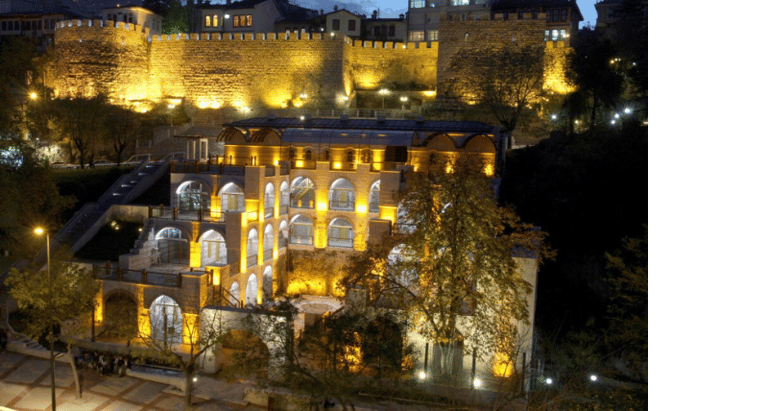

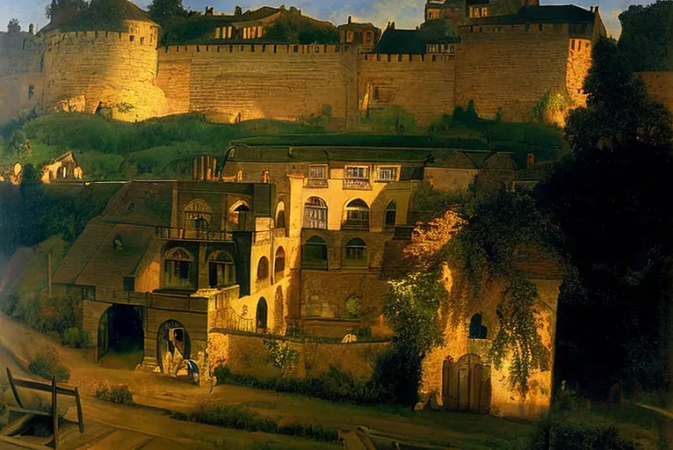

All these khans/inns are very close to each other, only a few minutes' walk apart. When you start walking in the historic center, which is still the heart of Bursa, you'll discover some of the most important historical and architectural beauties, including the Grand Mosque, Covered Bazaar, and Khans, one after another.
Bursa Castle and Walls / Sultanate Gate
Bursa was founded in the 2nd century BC by the Bithynians, who arrived in the region in the 7th century BC and later established an independent kingdom in 327 BC. The King of Bithynia, Prusias, constructed the city of Prusias in 185 BC on a hill, surrounded by walls based on the suggestion of Carthaginian general Hannibal, who had fled the Romans and sought refuge in his country. One of the notable attractions in Bursa is Bursa Castle and its walls, originally built by the Bithynians and later restored during various periods, including Roman, Byzantine, Ottoman, and the Turkish Republic.
The castle boasts 5 gates and 14 bastions, with the most famous gate being the Sultanate Gate. An intriguing feature within the castle walls is the underground passages and bunkers, likely constructed during the Byzantine period. In 1326, during the period of Orhan Gazi, who added Bursa to the Ottoman lands, the walls were fortified with bastions. According to the famous Ottoman traveler Evliya Çelebi, who visited Bursa in 1640, the walls had sixty-seven towers and five gates, surrounded by ten thousand steps. Today, the walls of Bursa span 2 km, and you can observe a significant portion on the left side of the hill leading to Tophane Park.
Irgandı Bridge
Irgandı Bridge, connecting the two sides of Bursa since 1442 and boasting only a few examples worldwide, is built over the Gökdere River. Originally covered, the upper part of the bridge was destroyed in the earthquake of 1855. Today, the bridge hosts artisan craftsmen, art workshops, and shops selling handcrafted souvenirs. These establishments showcase the finest examples of craftsmanship in mother-of-pearl and tile making. Irgandı Bridge is a ten-minute walk from the Green Tomb and mosque, and a five-minute walk from the city center.

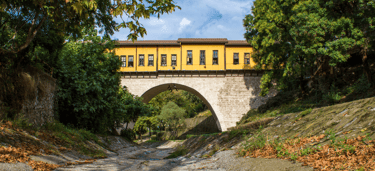
Heykel Historic City Hall
Established in 1867, the building of the Municipality of Bursa stands as Turkey's oldest municipal building.
The Bursa Municipality building, initially constructed in the north of Governmental Street where Orhan Imaret was located, was later relocated east of the Orhan Mosque within the Orhan Complex, built in the 14th century, after a fire.
The interior spatial design evokes Ottoman Mansions, utilizing a wooden carcass brick filling without plaster in the façade layout, reminiscent of the features of 18th-century Bursa houses
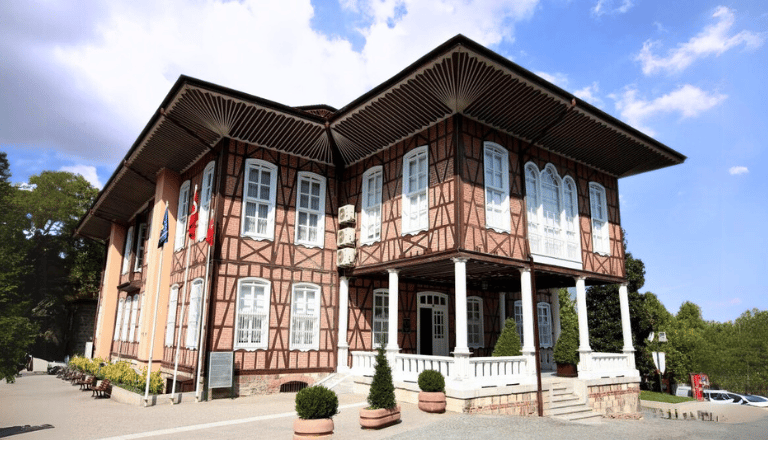

Osman Gazi and Orhan Gazi Tombs
The tombs of Osman Gazi, the founder of the Ottoman State, and his son Orhan Gazi, are located in Bursa Tophane. After Osman Gazi's son Orhan Gazi conquered Bursa in 1326, he fulfilled his father's will and buried him inside the structure called Gümüşlü Dome. This place was originally a Byzantine chapel converted into a mausoleum during the Ottoman period. The giant sarcophagus in the middle of the tomb belongs to Osman Gazi, and the sarcophagi next to him belong to his wife and children. Orhan Gazi's tomb is located just opposite to his father Osman Gazi’s tomb. The tomb includes the sarcophaguses belonging to Yıldırım Bayezid's son, Fatma Sultan, and Cem Sultan, in addition to those belonging to Orhan Gazi's wife Nilüfer Hatun and his son Şehzade Kasım.
Bursa Tophane Clock Tower
Situated in the Tophane park, where the tombs of Osman Gazi and Orhan Gazi are also located, the 33-meter-high Clock Tower, built during Sultan Abdülaziz's reign, was reconstructed in 1904 after being destroyed for unknown reasons. It stands as one of the most beautiful vantage points to view Bursa panoramically. Additionally, during Ramadan, this location is renowned for firing the famous cannon shots that echo throughout the city.

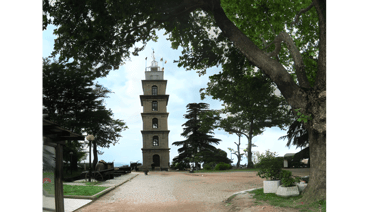
Bursa Museums

